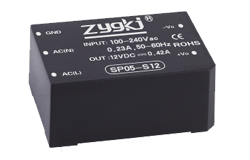noticias
The Electric Power Series: Revolutionizing the Energy Landscape
Autor: Módulo de potencia ZYG Time: 2023-8-27
In recent years, the world has seen a significant shift towards cleaner and more sustainable sources of energy. The increasing concern over climate change and the need to reduce greenhouse gas emissions have brought about a revolution in the energy landscape. One of the most promising developments in this revolution is the Electric Power Series.
The Electric Power Series is a collection of innovative technologies and systems that aim to revolutionize the way we generate, distribute, and consume electricity. This series encompasses a wide range of advancements, including renewable energy sources, smart grids, and energy storage solutions. By combining these technologies, the Electric Power Series offers a more efficient, reliable, and sustainable energy system.
One of the key components of the Electric Power Series is the use of renewable energy sources. Traditional methods of electricity generation, such as burning fossil fuels, have a detrimental impact on the environment. They contribute to air pollution, global warming, and resource depletion. In contrast, renewable energy sources, such as solar, wind, and hydroelectric power, offer a clean and abundant alternative. These sources do not emit greenhouse gases and do not deplete natural resources. The Electric Power Series promotes the widespread adoption of renewable energy sources to reduce carbon emissions and mitigate the effects of climate change.
Another important aspect of the Electric Power Series is the implementation of smart grids. A smart grid is an intelligent electricity distribution system that utilizes advanced communication and control technologies. It enables two-way communication between power suppliers and consumers, allowing for real-time monitoring and optimization of electricity usage. Smart grids can detect and respond to changes in demand and supply, ensuring a more efficient allocation of energy resources. They also facilitate the integration of renewable energy sources into the grid, as they can manage the intermittent nature of these sources. The Electric Power Series advocates for the widespread deployment of smart grids to improve the reliability and flexibility of the electricity system.
Energy storage is another critical element of the Electric Power Series. The intermittent nature of renewable energy sources, such as solar and wind, poses a challenge to their widespread adoption. Energy storage technologies address this challenge by storing excess energy generated during periods of high production and releasing it during times of high demand. This allows for a more stable and reliable energy supply. Energy storage also enhances the resilience of the electricity system, as it can act as a backup during power outages or natural disasters. The Electric Power Series promotes the development and deployment of advanced energy storage solutions to optimize the utilization of renewable energy sources.
The Electric Power Series has already made significant strides in revolutionizing the energy landscape. Many countries around the world have set ambitious targets for renewable energy deployment and have made substantial investments in smart grid technologies. For example, Germany has made tremendous progress in transitioning to renewable energy sources, with over 40% of its electricity coming from renewables in 2020. China, the world’s largest energy consumer, has also made significant investments in renewable energy and smart grids. These developments are a testament to the potential of the Electric Power Series to transform the energy sector.

However, there are still challenges that need to be overcome for the Electric Power Series to reach its full potential. The intermittent nature of renewable energy sources and the lack of adequate energy storage technologies remain significant hurdles. Additionally, the required infrastructure upgrades and policy reforms can be costly and time-consuming. Nevertheless, with continued innovation and collaboration, these challenges can be addressed, paving the way for a more sustainable and resilient energy future.
In conclusion, the Electric Power Series offers a promising solution to revolutionize the energy landscape. By harnessing the power of renewable energy sources, smart grids, and energy storage technologies, this series aims to create a more efficient, reliable, and sustainable energy system. While there are challenges to overcome, the progress made so far is a testament to the potential of the Electric Power Series. With the continued support and investment, we can accelerate the transition towards a cleaner and greener energy future.
Anterior: The Electric Power Series: Empowering the World with Electricity
Próximo: AC/DC Power Supply Module: Delivering Reliable Electrical Power Solutions
informacion relevante
-
2023-8-14
Introducing the DM Series: The Ultimate DC DC Power Supply Solution
In today's fast-paced world, where technology is evolving rapidly, the demand for efficient and reliable power supply solutions is ever-increasing. Whether it's for consumer electronics, telecommunications, or industrial applications, having a stable and high-quality source of power is crucial. That's where the DM Series comes in – the ultimate DC DC power supply solution that sets a new standard in the industry. The DM Series is a cutting-edge power supply system developed by a team of experienced engineers and designers. It combines advanced technology, innovative features, and superior performance to provide users with an unparalleled power supply experience. With various models and configurations available, the DM Series caters to the diverse needs of different industries and applications. One of the...
Ver detalles -
2023-6-22
Bi-Directional DC-DC Converter: Efficient Energy Transfer in Both Directions
As the global demand for renewable energy continues to increase, the need for efficient energy transfer becomes more critical. One essential element in the energy transfer process is the DC-DC converter. The DC-DC converter is a device used to convert DC voltage from one level to another. It\'s used in many applications, including renewable energy systems, automotive, aerospace, and telecommunications. In recent years, there has been a growing interest in bi-directional DC-DC converters. A bi-directional DC-DC converter is a device that can transfer energy in both directions, from the power source to the load and vice versa. This type of converter is particularly useful in renewable energy systems, where energy is generated by solar panels or wind turbines and stored...
Ver detalles -
2023-7-24
Are you introduced to the efficient and reliable DC DC Converter EX Series?
As technology continues to advance, the need for efficient and reliable power solutions becomes increasingly important. With this in mind, we are proud to introduce our latest innovation, the DC-DC Converter EX Series. This cutting-edge converter is designed to provide exceptional performance and stability, making it the ideal choice for a wide range of applications. One of the key features of the DC-DC Converter EX Series is its high efficiency. With an efficiency rating of up to 98%, this converter minimizes power loss and maximizes energy savings. This makes it perfect for use in renewable energy systems, electric vehicles, telecommunications equipment, and many other power-hungry applications. By reducing energy consumption, the EX Series helps to lower operational costs and reduce...
Ver detalles -
2023-4-21
AC-DC Power Supply: A Reliable Source of Electrical Power
An AC-DC power supply is a device that converts alternating current (AC) into direct current (DC) in order to provide a reliable and stable source of electrical power. This type of power supply is commonly used in electronic devices, ranging from small battery-operated devices to large industrial equipment. The main advantage of an AC-DC power supply is its ability to provide a constant and stable source of DC power, regardless of the fluctuations in the AC input voltage. This is achieved through the use of rectifiers and voltage regulators, which convert the AC voltage to DC and regulate the output voltage respectively. There are various types of AC-DC power supplies available in the market, including linear power supplies, switch-mode power...
Ver detalles -
2023-6-26
24V AC to DC Converter: Efficiently Transforming Alternating Current to Direct Current
In many electrical systems, it is necessary to convert alternating current (AC) to direct current (DC). This is particularly true in applications such as automotive electronics, where a steady voltage supply is required for powering various electrical components. One of the most commonly used devices for converting AC to DC is the 24V AC to DC converter. The 24V AC to DC converter is a device that transforms the incoming AC voltage into a steady DC voltage output. This conversion can be achieved through a number of different techniques, including rectification, smoothing, and filtering. The first step in the conversion process is rectification, which involves converting the AC voltage into a pulsating DC voltage. This is done using a diode...
Ver detalles -
2023-4-22
Building a 120V AC Power Supply for 3V DC Output
Building a 120V AC Power Supply for 3V DC Output If you need a 3V DC power supply, there are a lot of options to choose from. However, if you want to build one yourself, you can do it with a few simple components. Here\'s how to build a 120V AC power supply for a 3V DC output. Step 1: Gather Your Materials To build a 120V AC power supply for a 3V DC output, you\'ll need the following components: - Transformer with a 120V AC primary and a secondary output of 3V AC - Rectifier diode (1N4007) - Capacitor (1000uF, 25V) - Voltage regulator IC (LM7803) - Heat sink for the voltage regulator - Resistor (240 ohm) Step 2:...
Ver detalles


















